Alfa Romeo
A water cooled flat-4 was used on the Alfa Romeo Alfasud. That
engine was later used on the Alfa Romeo Arna (a joint venture with
Nissan), the Alfa Romeo 33, the Alfa Romeo Sprint and the Alfa Romeo
145/146. The Alfa 33 TT 12 racecar with an indestructible boxer
engine should also be noted. |
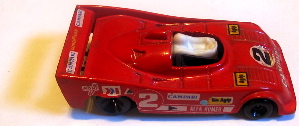
Alfa Romeo 33 TT - Galgo
|
BMW
BMW used a original motorcycle 2 cylinder in their 600 & 700
car models (600 is a 4 wheel bubblecar) The 700 was a rear, boxer
twin engine 'small people's car' which saved the BMW company from
being shut down. |
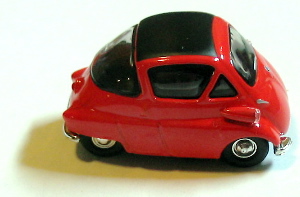
BMW Isetta - Kyosho
|
Chevrolet Corvair
The Chevrolet Corvair was in part a response to the large import
of German lowcost air cooled cars for an American people's car.
It could come with up to 180 HP if they applied a turbo charged
6 cylinder air cooled power plant, but it was only in production
for 10 years. |
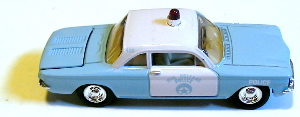
Chevrolet Corvair - Racing Champions
|
Citroën
Citroën used an air cooled flat-2 and a flat-4 in the 2CV.
They also used an air-cooled flat-4 on the Ami Super, GS, GSA and
Axel models. |
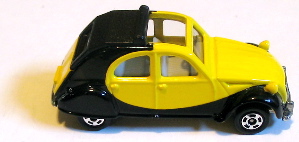
Citroën 2CV - Tomica
|
Daf
The DAF was a small people's car from the Netherlands with a unique
automatic, the CVT transmission, made use of a boxer engine. The
Daffodil model started with a air cooled twin but eventual was replaced
with a stronger 4 cyl. line engine. |
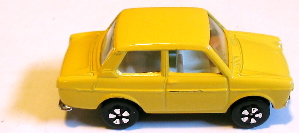
DAF - Playart
|
Ferrari
The Ferrari flat 12 boxer engine was first used on their Formula One
cars of the late 1960's. The flat 12 engine reached production on
the Berlinetta Boxer of 1973 and continued in the Testarossa models
through the 1990's. |
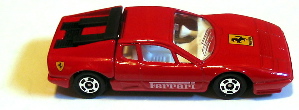
Ferrari BB512 - Tomica
|
Gurgel This Brazilian car builder of mainly off road vehicles
used fiberglass bodies with VW mechanicals.
Lancia
Lancia used a water cooled flat-4 on the high-end Lancia Gamma. |

Lancia Gamma -
|
Kit cars
Citroen based Kit cars include; Le Patron, Lomax, Falcon and several
others. VW based Kit cars include; Aztec, Bradley, Kendall, Kelmark,
Manx, Porsche Replicas, Puma, RTS and the Wombat or Humbug. |
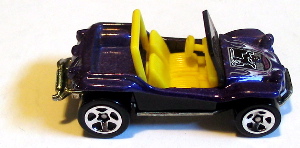
Meyer's Manx - Hot Wheels
|
Porsche
Porsche used the VW engine in the early Porsche 356. This engine
was replaced by a Porsche designed flat-4 in the late 356s and the
912. The 914 that replaced the 912 was built in partnership with
VW using a VW engine.
One of the most famous boxer-engined race cars was the 1970 Porsche
917K. This Le Mans winning car has a 4.5 litre naturally aspirated,
air-cooled, flat 12-cylinder engine, delivering 580hp at 8400rpm
in a car weighing 800kg. |
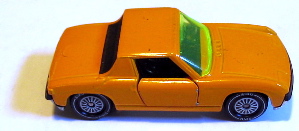
Porsche 914 - Siku
|
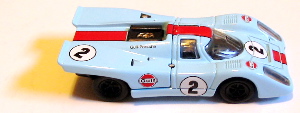
Porsche 917K - Hot Wheels
|
Saab
This new development by Saab for the 9-6X will be using a Porsche
designed Diesel boxer engine in 2006. |
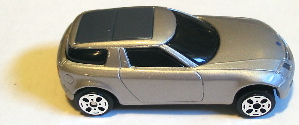
Saab 9X Concept - Maisto
|
Subaru
Their WRC rally car uses water-cooled front mounted flat-4 engines
marketed as H-4, by which they mean 'horizontal' rather than the
H cross-section normally meant by 'H' engine. |
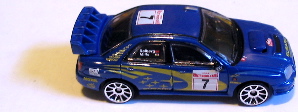
Subaru WRX WRC - Hot Wheels
|
Syrena
This is a Polish car brand with a prototype sports car based on the 101
model with 4-boxer by Wladyslaw Skoczynski.
Tatra
This east European car brand from Czechoslovakia used several boxer
engines in various models. All of them were T number models of which
the best known T 600 models and higher used 4 or 8 cylinders. |
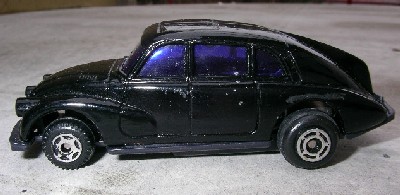
Tatra - HW (courtesy of Maarten Tys)
|
Volkswagen
VW used air-cooled flat-4s extensively in their early days in the
VW Beetle and most early VW designs. VW used a water-cooled flat-4
in the T3 until 1991. The last 200 air cooled T2 bay window buses
came off the production line in December 2005 in Brazil. |

VW 1200 Beetle - Siku
|
|




